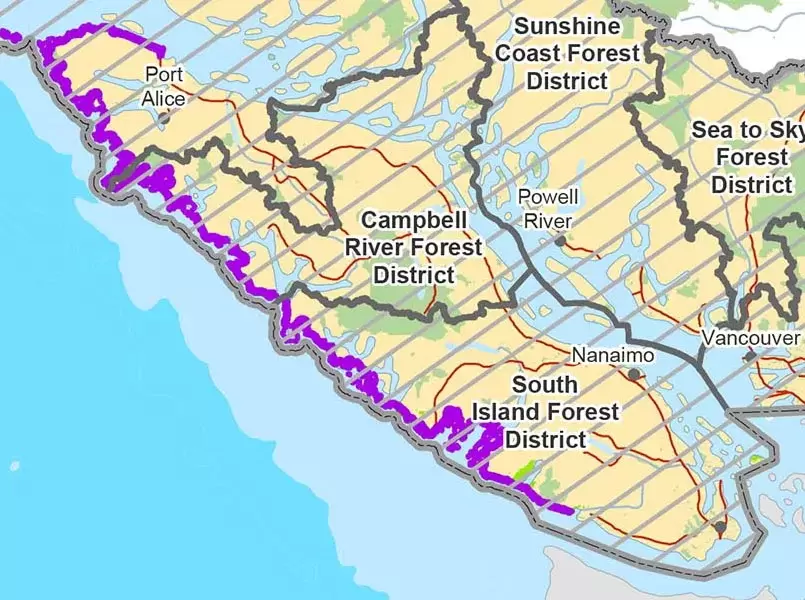Fire restrictions are returning to Vancouver Island this spring, with a ban on larger open fires coming into effect Wednesday, June 7.
The province’s Coastal Fire Centre announced the Category 2 prohibition on Tuesday, restricting the burning of piles of material that are smaller than two metres high and three metres wide. Burns larger than three metres require a registration number from the BC Wildfire Service, but campfires smaller than half a metre in height and diametre are still permitted under the new restriction.
“People lighting a campfire must maintain a fireguard by removing flammable debris from the campfire area, and they must have a hand tool or least eight litres of water available nearby,” stated a June 6 release from the BC Wildfire Service. “Ensure that the fire is completely extinguished and the ashes are cold to the touch before leaving the area for any length of time.”
The prohibition includes all provincial parks, Crown land and private land within the Coastal Fire Centre’s jurisdiction, but does not apply to the boundaries of a local government that has forest fire prevention bylaws and its own fire department services. The restriction does not include what the Coastal Fire Centre calls “the fog zone.” This is a two-kilometre-wide strip of Vancouver Island’s coast that stretches from Owen Point near Port Renfrew to the District of Port Hardy in the north.
“They have a different marine climate that is actually extremely wet,” said Marg Drysdale, an information officer with the Coastal Fire Centre. “We generally don’t include the fog zone unless it really dries out, which it did in 2015.”
First Nation reserves are also not included in the ban, but traditional territory can be.
“First Nations are not obliged to follow the Category 2 open fire on reserve lands,” said Drysdale. “If it’s private land that they’ve bought for commercial purposes, then there are obligations there.”
A First Nation’s treaty land can also be exempt from the fire restrictions, depending on the legal stipulations of the agreement.
“Treaty land has a different set of obligations,” said Drysdale, noting that during the fire season some Nations will follow the provincial prohibitions. “A lot of the First Nations like to mirror it simply as a precaution for their own areas. We respect their right not to implement it, but we do put it out there so that they know what we’re doing, what other jurisdictions are doing and they can choose to follow it if they so wish.”
This is what happened during a particularly severe fire season in 2015, when the fog zone was included in a widespread ban on all fires. When the province announced these restrictions on July 8, the Huu-ay-aht First Nations followed to include the prohibition for its Pachena Bay Campground.
“The Coastal Fire Centre is prohibiting all campfires due to continued hot and dry conditions and the dryness of forest fuels. Huu-ay-aht First Nations expects people using its territory to follow the rules outlined by the province,” stated the Nation in a release. “The public’s assistance is requested to help reduce the number of human-caused fires and enable crews to respond to naturally occurring wildfires.”
After the ban was announced, the Huu-ay-aht First Nations heard from its citizens regarding the cultural use of fire for practices such as smoking fish. In response to this feedback, The Huu-ay-aht added language to the restriction that allowed some fires for traditional purposes, with conditions that the burning was closely monitored and that a water source was nearby.







